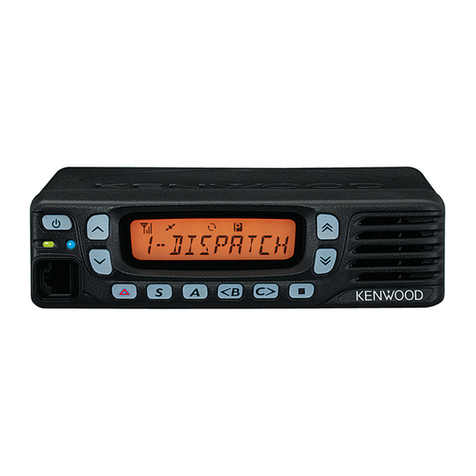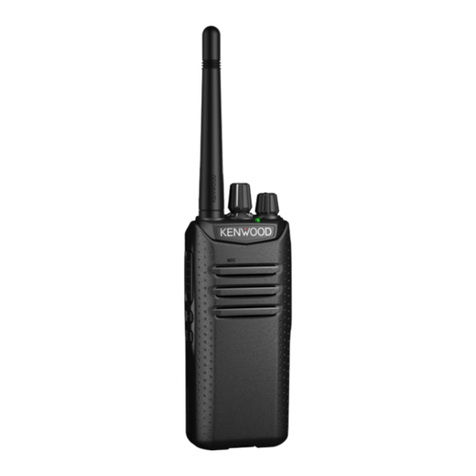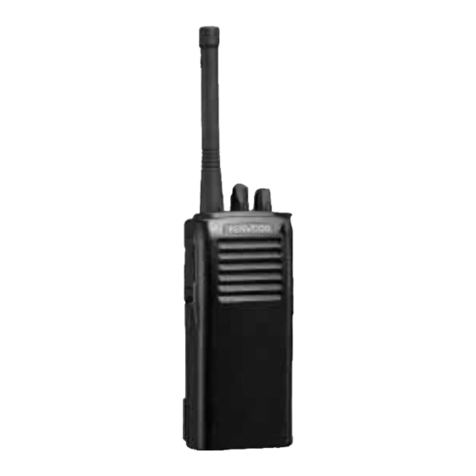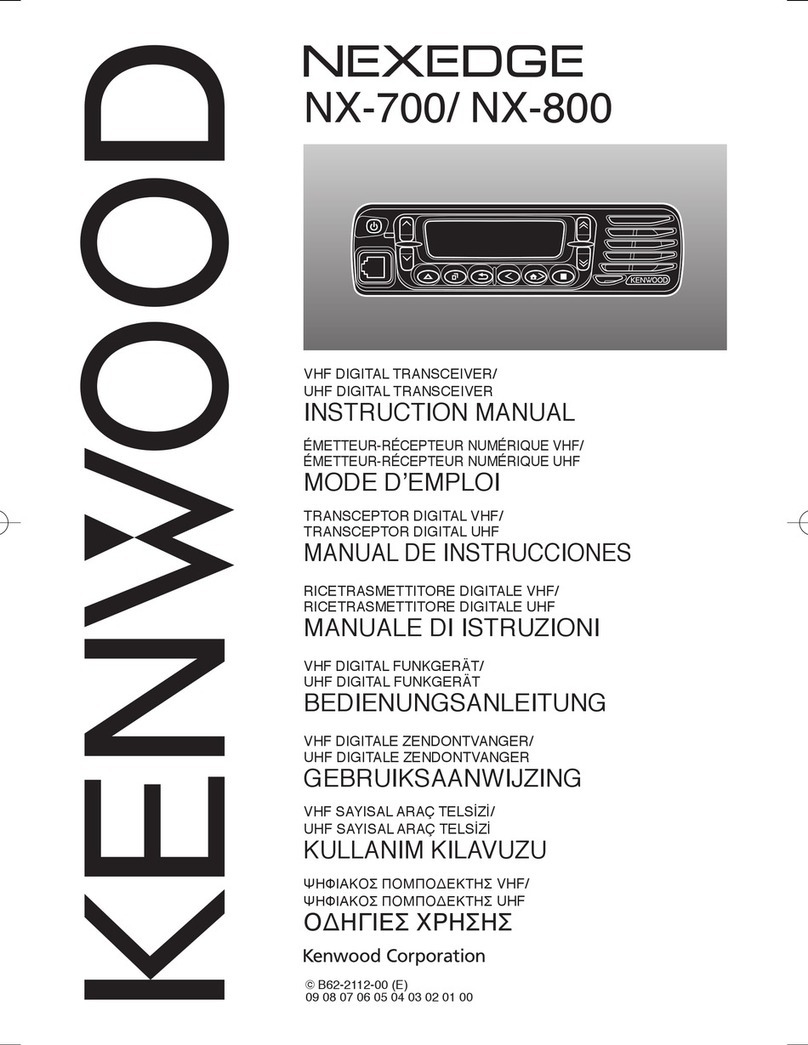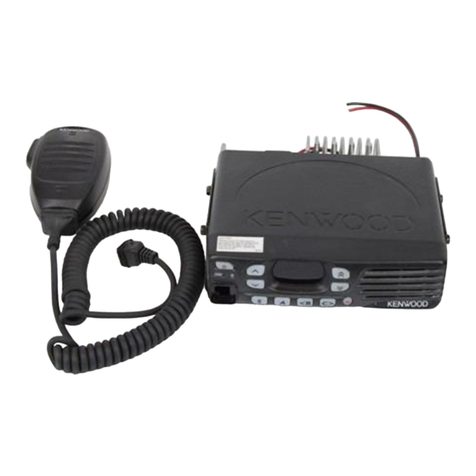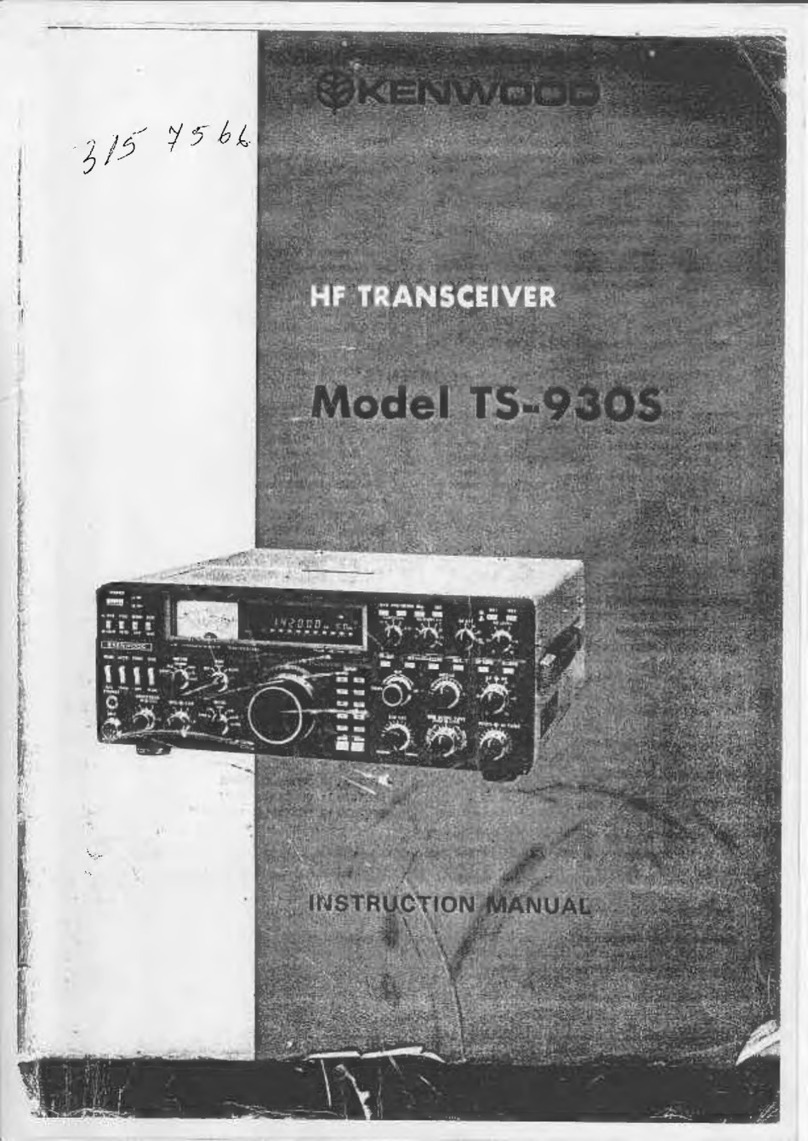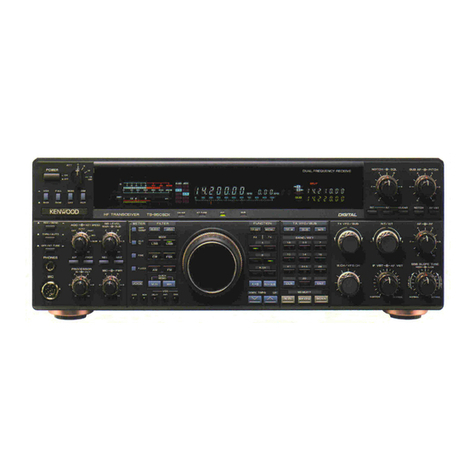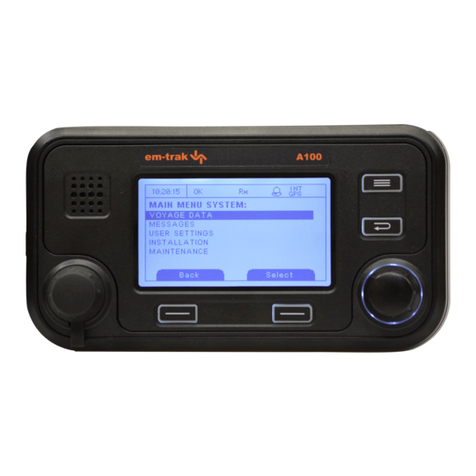
TS-480HX/480SAT
8
■From detection to AF output
As for the AF signal detected in each mode, a necessary
mode for the signal is selected by the analog switch (IC733).
The AF signal is amplified at IC224 and IC218 and converted
to a digital signal by the CODEC (IC217), and is then sent to
the DSP (IC220).
In the DSP, the basic signal processing such as AF gain,
the interference elimination such as slope tune, and the noise
reduction such as NR are performed for the signal. The signal
is then converted to an analog signal again at the CODEC.
The analog signal is amplified at IC214, then re-amplified
at the AF amplifier (IC734) to drive the speaker.
To utilize the convenience of the “completely separated
panel type”, the internal speaker and the headphone terminal
is mounted in the panel and the external speaker terminal is
mounted in the transceiver.
To realize the priority of the received audio output (the
headphone (top priority), the external speaker (the second
priority), and the internal speaker (the third priority)), use the
headphone and the external speaker jack having a switch to
make each MCU (X54 IC3, X57 IC204) recognize the condi-
tion of the inserted plug and switch the relay set on the out-
put of the AF amplifier (IC734) in order to select an appropri-
ate path.
FM
AM
SSB
CW
FSK
IC733
Analog SW IC224
TX-RX unit (A/2)
IC218
(A/2)
IC217
CODEC
IC734
AF AMP
IC220
DSP
IC214
(A/2)
EXT. SP
Panel
(INT. SP/Headphone)
Fig. 6 From detection to AF output
IC220
DSP
IC221
MIC AMP
IC218
(B/2) IC214
(B/2)
IC219
Analog
SW
IC217
CODEC
IC212
DAC
FM MOD
SSB/AM/FSK
Balanced MOD
MIC
TX-RX unit (A/2)
Fig. 7
From the MIC terminal to modulation output
■From the MIC terminal to modulation output
The frequency configuration of the transmitting part is
double superheterodyne: the transmitter first IF
(10.695MHz) and the transmitter second IF (73.095MHz).
The same type 16-bit DSP as the receiver circuit is used in
the audio signal processing stage.
The MIC terminal is mounted in the transceiver and a
modular jack is also employed. This is the fist time an HF
transceiver to has had a modular jack.
The AF signal input from the MIC terminal is amplified at
the microphone amplifier (IC221) and passes through the
analog switch (IC219), where it is amplified again at IC218.
The AF signal is converted to a digital signal by the CODEC
(IC217), and is then sent to the DSP (IC220).
In the DSP,. the MIC gain, the processor, and various fil-
tering are performed for the signal and it is converted to an
analog signal by the CODEC. The analog signal is amplified at
IC214 and assigned to FM mode or a mode other than FM
mode by the DAC: IC212 (used as the electrical volume), and
is then sent to each modulation circuit.
Transmitter Circuit
There are two types of transmission output: 200W (TS-
480HX) and 100W (TS-480SAT). The 100 W transceiver has
an internal antenna tuner.
With the presence of the internal antenna tuner, the final
section (A/3), the LPF section (B/3), and the ANT section (C/3)
of the final unit is different between the 200 W transceiver
and the 100W transceiver (200W transceiver: X45-366,
100W transceiver: X45-365). The same type of the TX-RX unit
(X57-663) and RF unit (X44-327) are used in both the 200W
transceiver and the 100W transceiver, even though there is a
small constant difference.
In addition, the same type of display unit (X54-341) is used
in both the 200W transceiver and the 100W transceiver.
Signal Path Before/ After the CODEC
The signal path changes corresponding to the transmis-
sion/reception since the CODEC exchanges the signal with
the optional unit (VGS-1).
■Functions relating to transmission
1) Modulation input path
The output signal sent from the analog switch (IC219) en-
ters the CODEC, and is then sent to the DSP (IC220).
•The signal sent from the microphone is output from pin 11
to pin 10 of the analog switch.
•The signal sent from the data terminal (ANI) is output from
pin 1 to pin 2 of the analog switch.
•The message output signal (DRO) sent from the optional
unit (VGS-1) is output from pin 4 to pin 3 of the analog
switch.
2) Modulation output path
The AF signal processed at the DSP (IC220) enters the
CODEC (IC217) again and is amplified at IC214. The signal
amplified at IC214 passes through the following signal paths
in FM mode and SSB/ AM/ FSK mode. (The MIC gain is de-
cided at the DSP, not DAC (IC212), in both modes.)
•FM mode
The signal enters pin 21 of the DAC, and is then sent from
pin 22 to the FM modulation circuit (FMOD).
•SSB/ AM/ FSK mode
The signal enters pin 24 of the DAC, and is then sent from
pin 23 to the balanced modulation circuit (SMOD).
CIRCUIT DESCRIPTION


